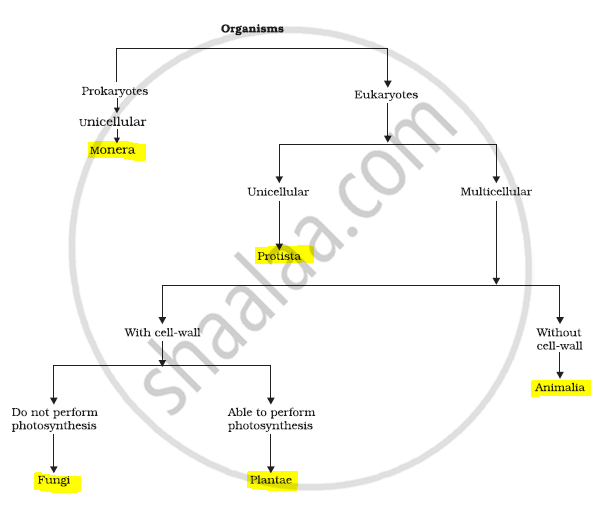Advertisements
Advertisements
Question
Explain the basis for grouping organisms into five kingdoms.
Solution
R.H. Whittaker proposed a five kingdom classification of living organisms on the basis of Linnaeus’ system of classification. The five kingdoms proposed by Whittaker are Monera, Protista, Fungi, Plantae, and Animalia.
The basis for grouping organisms into five kingdoms is as follows:
(i) On the basis of the presence or absence of membrane-bound organelles, all living organisms are divided into two broad categories of eukaryotes and prokaryotes. This division lead to the formation of kingdom Monera, which includes all prokaryotes.
(ii) Then, eukaryotes are divided as unicellular and multicellular, on the basis of cellularity. Unicellular eukaryotes form kingdom Protista, and multicellular eukaryotes form kingdom Fungi, Plantae, and Animalia.
(iii) Animals are then separated on the basis of the absence of a cell wall.
(iv) Since fungi and plants both contain a cell wall, they are separated into different kingdoms on the basis of their modes of nutrition. Fungi have saprophytic mode of nutrition, whereas plants have autotrophic mode of nutrition. This results in the formation of the five kingdoms.

APPEARS IN
RELATED QUESTIONS
In which kingdom will you place an organism which is single-celled, eukaryotic and photosynthetic?
Select the most appropriate answer.
Biennials complete their life cycle in
Draw a flow chart showing classification of kingdom Plantae.
What is hierarchy of categories? Describe the same.
Write a note on kingdom Monera.
Draw a neat and labelled diagram.
Paramoecium
Which one of the following is an example of binomial scientific name?
Give the scientific names of man, domestic cat, and peepal tree.
______ are called as amphibians of the plant kingdom.
______ belong to Monera.
